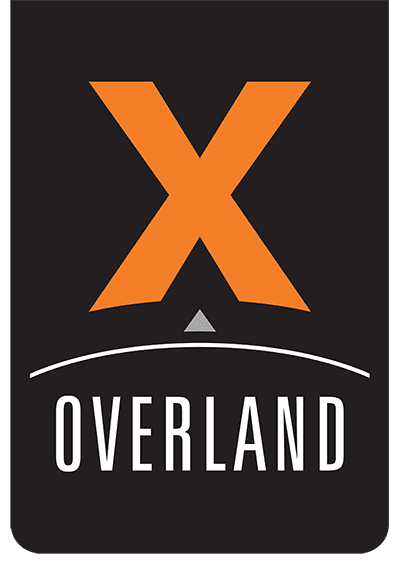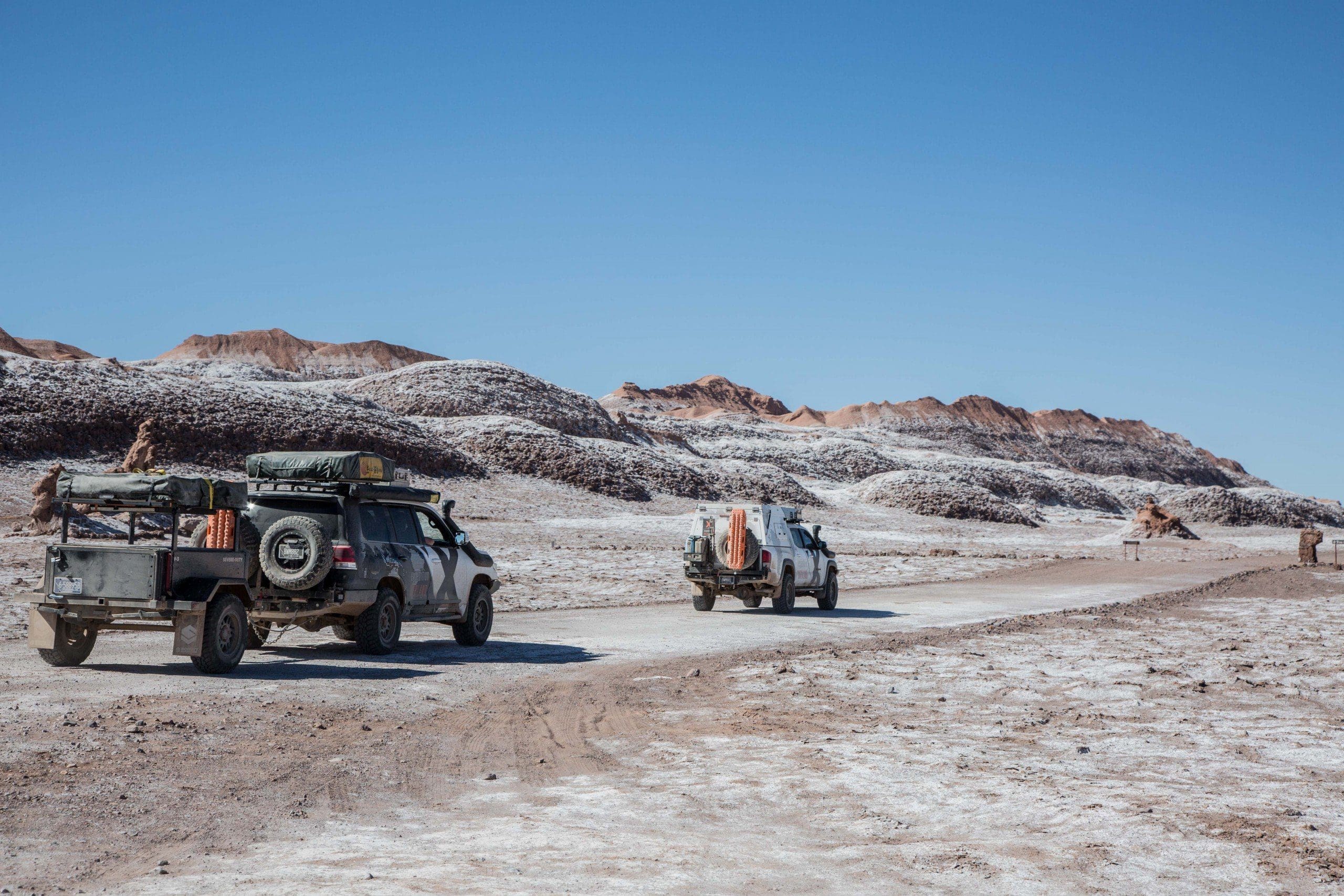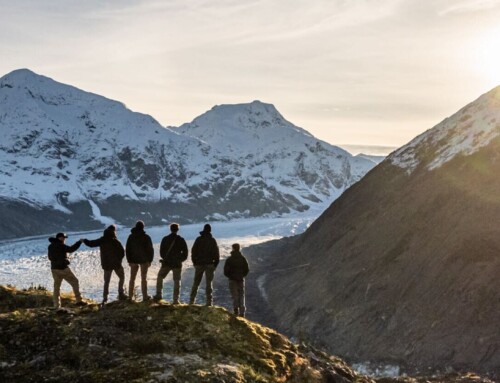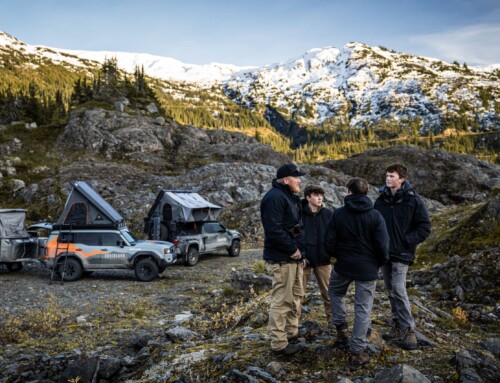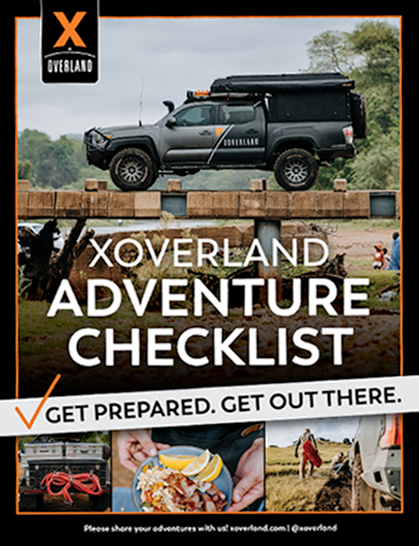One of the most common questions we get at Expedition Overland is “How do I start overlanding?”
First off, let’s review the term ‘overlanding,’ as defined by Overland Journal.
Overlanding is self-reliant adventure travel to remote destinations where the journey is the principal goal. Typically, but not exclusively, it is accomplished with mechanized off-road capable transport (from bicycles to trucks) where the principal form of lodging is camping; often lasting for extended lengths of time (months to years) and spanning international boundaries.
We’ve discussed this topic in length HERE, so be sure to check out our previous blog post on the subject.
If overlanding is something you want to do, this blog post is a great place to start. At Expedition Overland, we’ve found that if you can master a 10-day trip, you can master any length of overland travel. Because really, long-distance travel boils down to a 10-day trip cycle repeating itself, over and over again. If you can carry out a 10-day trip, you can go anywhere in the world.
In addition, there are several skill sets that the overlander uses to travel the world. These include problem solving, driving, camping and navigation. We’ll review each one in detail below.
Problem Solving
Two of the most important skills demonstrated by any overlander are a curious mind and a problem-solving attitude. Life on the road is challenging. There are always obstacles to overcome, including mechanical problems with your vehicle, language barriers, currency conversions, road closures, etc. Despite these challenges being tough at times, they also make for some of the most fun a traveler will ever have and are big confidence boosters. That being said, if problem solving isn’t your cup of tea, overlanding likely won’t be either.
There are differences between the weekend warrior trip and a short-term or long-term overlanding trip. The long-term overlander has different priorities. Here’s why.
- Vehicle preparation is more extensive for the long-term overlander, and often (but not always) the long-term overlander budgets more for their vehicle than the weekend warrior. Keys here are preventative maintenance, longevity and proven, robust systems. Vehicle reliability is very important. In addition, the long-term overlander likely brings less stuff than the weekend warrior. They have paired down items to only what is necessary.
- The long-term overlander will often undergo a more intensive skill set preparation. He or she might enrol in language classes to upgrade skills, have a higher level of mechanical understanding and a higher degree of concern for medical training. Due to the long duration of the trip, the overlander might, for example, be inclined to upgrade their Wilderness First Aid Certification to a Wilderness First Responder Certification.
- The long-term overlander spends time on administrative preparations, such as organizing border crossing paperwork, international travel documentation and insurance.
- Typically, the long-term overlander is focused on budget. They have either saved money ahead of time or have residual income that allows them to stay on the road. He or she also typically has a daily budget.
- Lastly, the long-term overlander must consider security. He or she needs to understand how to set up secure campsites, and are strategic as to where they are parking their vehicle and how. Upgrades to the vehicle such as tinted windows and lock boxes are a consideration for any long-term overlander.

Camping
Weekend warrior trips are invaluable as they help the aspiring overlander gain the skills to transition into long-term multi-country adventures.
Plan a two-night trip for this weekend. Check out our post on planning a trip HERE. No need to go gangbusters on your first attempt – pack basic shelter, food, cooking supplies and a destination. Our Gear We Use Page is a great place to start. Don’t forget to bring enough soft goods (sleeping bags, jackets) and double check the weather forecast! And don’t worry too much if you forget something at home. Nine times out of ten you can always pick it up on the way. Don’t forget that this carries over into the big overland trips as well. For example, we found many Autozone and Wal Mart stores throughout Mainland Mexico.
After returning from your weekend trip, make note of everything you didn’t need, as well as what you needed that you didn’t bring. Consider these revisions as you prepare your own detailed packing list for the next trip. Embark on another weekend trip with your newly refined list. We’ve found that no matter how many weekend warrior or overland trips we’ve been on, we’re always tweaking our packing list.
Now you’re ready to take on a 10-day trip! Remember that a 10-day trip is just a two-day trip building on itself. At this point you might want to consider a few improvements to your camp set up, such as a refrigerator or tire repair kit and air compressor. Tire failure is the number one issue overlanders will encounter, especially on long-term trip durations. Also consider that the space and weight of a fridge is more efficient than a cooler.
After completing your 10-day trip, refine your list again. You now have at least 14 days’ experience living out of your vehicle and are ready to undertake a long-term trip.
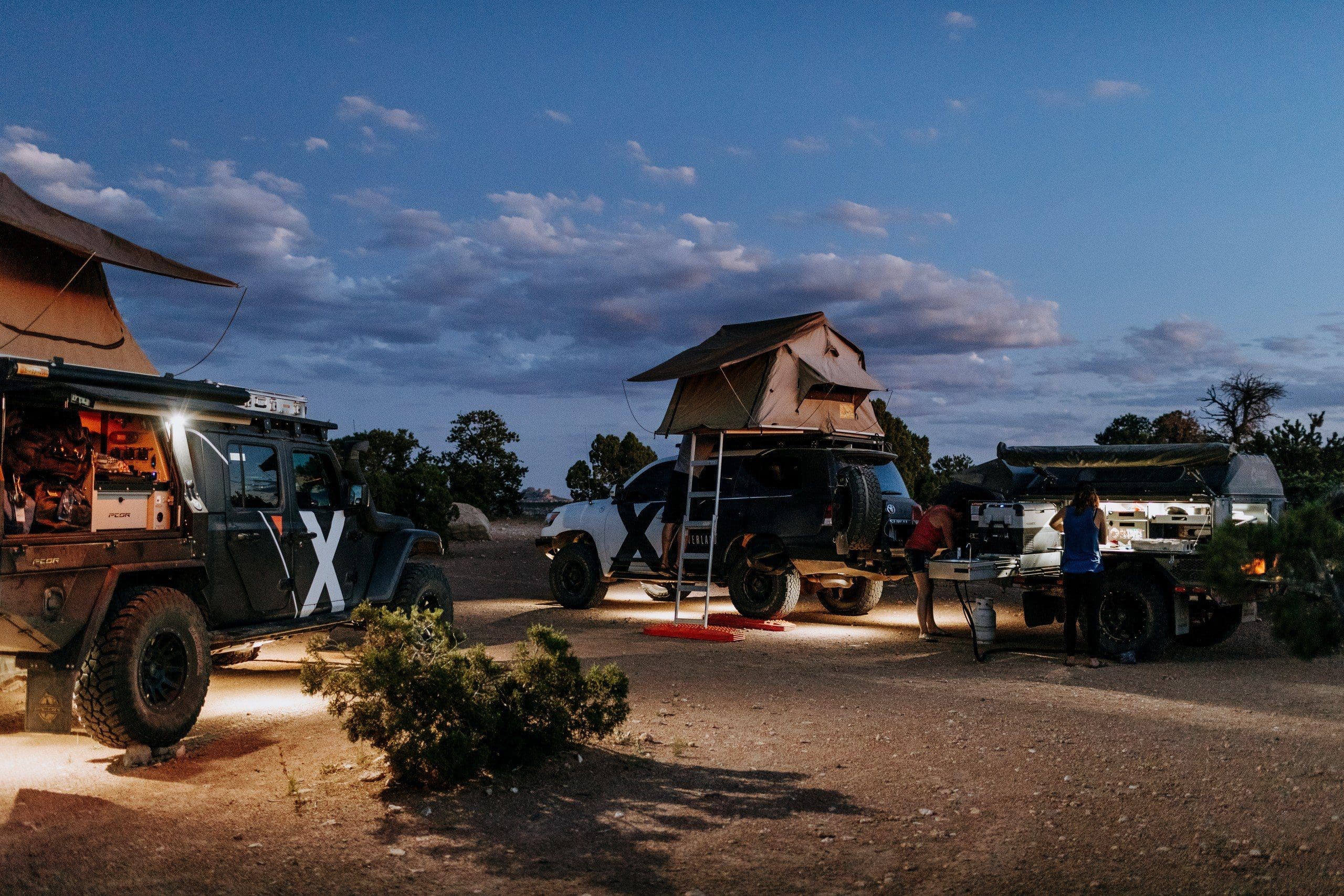
Driving
The best vehicle is almost always the one you have parked in your driveway! No matter whether your vehicle has all-wheel drive or is 4WD capable, it is likely the perfect fit for weekend warrior travel. It is important, however, to ensure your vehicle is mechanically sound. We’ve covered the basics in our Guide to Vehicle Maintenance post, so be sure to check those out HERE.
Now that your vehicle is mechanically sound, load it up with camping equipment. Be sure to follow the loading and latching principals to ensure your items are secure. If you don’t want objects impregnating themselves into your skull during a hard break at 60 mph, make sure they are tied down.
Of course, if you are tackling off-road trails or heading out on a longer term trip it is prudent to carry the following essentials: , , , a tow strap, and a basic tool set. In fact, if you have these basic items, you can go anywhere in the world.
It is also important to know your vehicle well, be capable of changing a tire, and working on the basic mechanical components that typically fail on a vehicle.
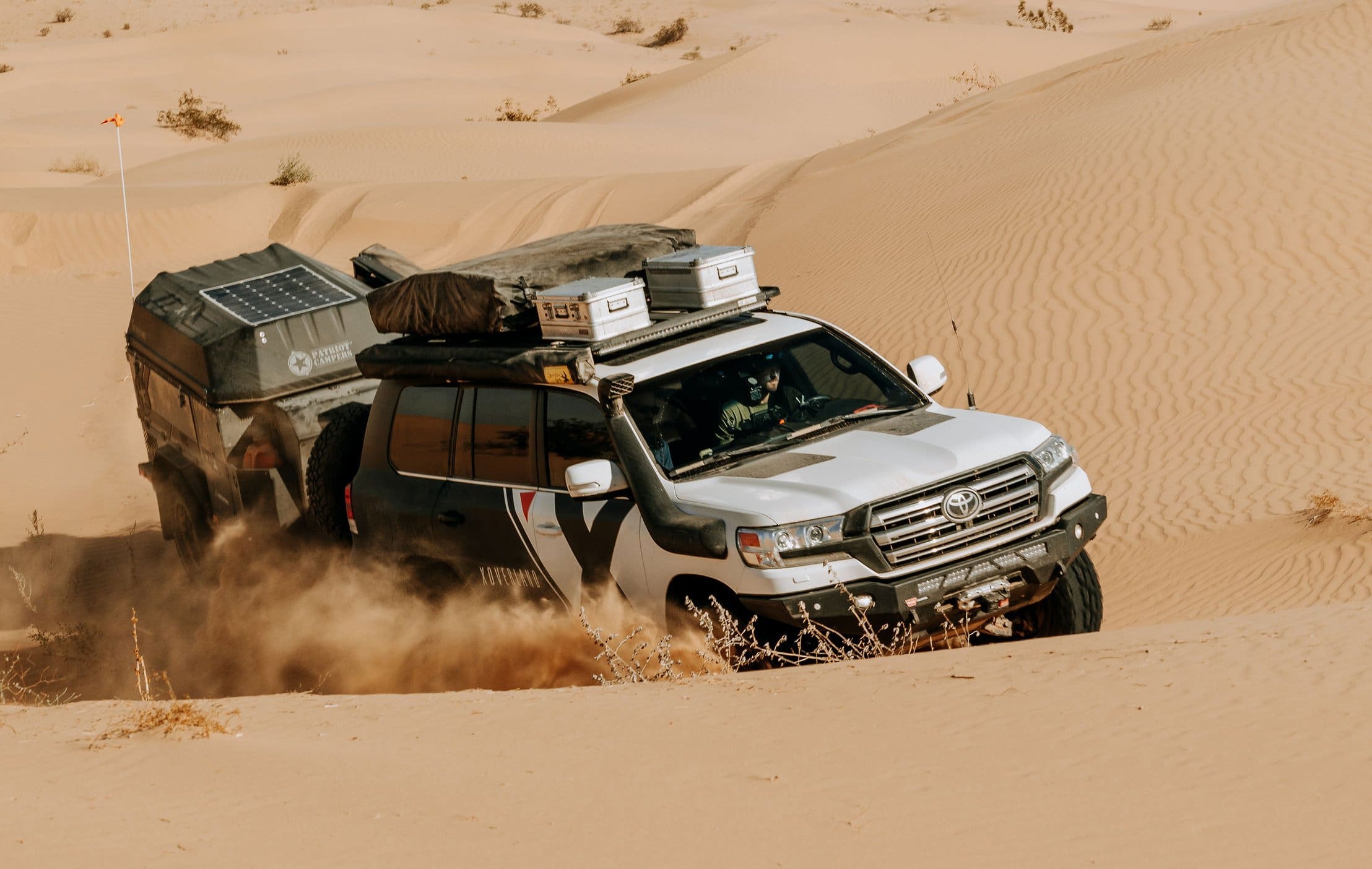
Navigation
Know where you’re going! Even if it’s just a general idea, take a peek at the map. Note local resources, hospital, grocery store, fuel. Plan your trip accordingly.
Implement a multi-layered navigation system in case of failure. Remember: one is none and two is one. A great way to do this is to carry a cell phone with mapping software, a dedicated GPS and a compass and paper map. These tools are important so that you don’t get lost. At the end of the day, you have to be able to rely on yourself in case one or more of these items fail.
Understand latitude and longitude and have a general sense of how to figure out your direction. The National Outdoor Leadership School (NOLS) offers educational courses focusing on how to use a map and compass. We also recommend the book Finding Your Way Without Map and Compass by Harold Gatty.
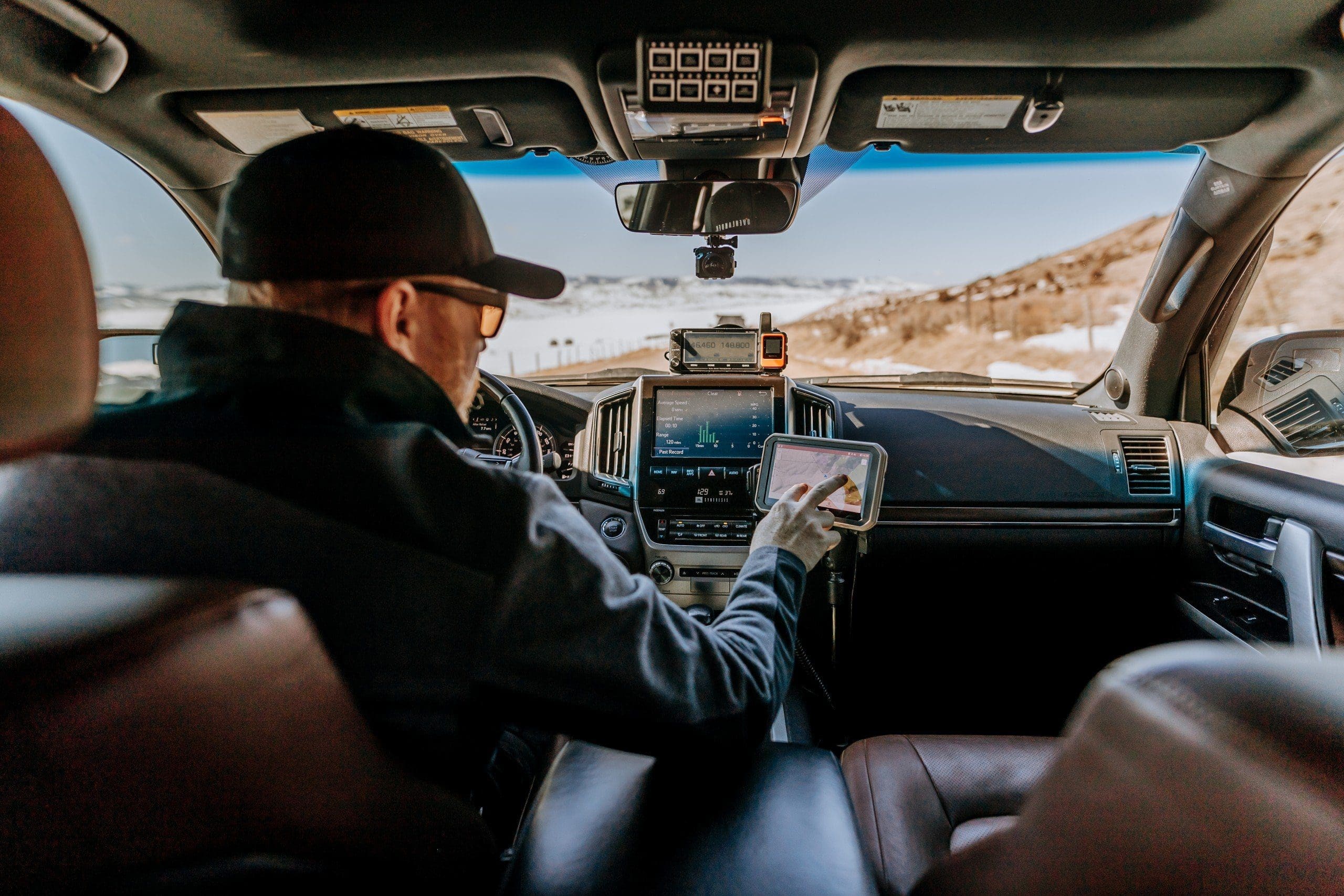
For more on this subject, be sure to watch Oh Hey There With Jeff: How To Get Into Overlanding and Connect with Other Overlanders.
We hope that these tips and tricks help clarify where to start if you want to undertake weekend warrior trips, short-term trips and long-term overland adventures. Where are you off to next? Let us know in the comments below.
